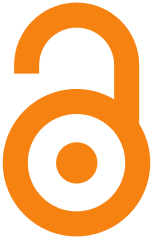Journal selection
The selection of journals, and their fields of research and categories, is based on Web of Science, specifically its Science Citation Index Expanded (SCIE), its Social Science Citation Index (SSCI), and its Arts & Humanities Citation Index (AHCI) according to the 2021 version of Web of Science (released in June 2022). These three indices cover leading peer-reviewed journals across the sciences.
While the complete population would comprise almost 14.000 unique journals in total, OOIR only tracks those 12.016 journals that deposit relevant metadata to CrossRef and that have published at least 20 papers in the last 4 years prior to the beginning of January 2023 (according to the field published in CrossRef's API).
Add new journals
OOIR can nevertheless add further journals so as to cover their research in the trending papers list and the journal rankings; it will be very appreciated as it offers a kind support of this webpage. Given that OOIR operates as a free-to-use hobby project, and given that the inclusion of another journal requires some effort, a compensation of €33,- will be asked for – the only fee OOIR asks for.
Simply click on "Pay" for this purpose, and have your ISSN and the journal name ready.
Journal-level data
The journals' ISSN, name and categories were taken from Web of Science. The Twitter accounts were taken from this dataset.
The number of papers published in the last four years are taken from CrossRef, based on the sum of publications registered there, using the since-pub-date-field in the CrossRef API.
The citation-based metrics likewise use that data source; while the average and median citation counts are self-explanatory, the following two may require an explanation:
- TQCC (top quartile citation count): Using all publications from the past four years of a journal, sorting them by the number of citations they have accrued since then (in descending order), and extracting the citation count of the paper that resides at the top 25% within that ordered list leads to the TQCC. That is, given 100 publications in four years, the citation count of the paper that has the 25th highest count of citations is the TQCC.
- H4-Index: A journal has H4-Index of h when h of its past four year's publications has h citations, whereby h is the highest possible number that renders the former statement true.
The list Most cited by this journal is based on the ISSN deposited as open references in CrossRef using the last 50 papers published by a given journal. See I4OC (Initiative for Open Citations) for more information on this issue of open citations.
On 'Trending Papers', see the section on article-level data.
Population of papers
OOIR identifies the newest papers by accessing CrossRef's API every few minutes. As a first step, OOIR's scripts loop through the register of journals to fetch the journals' ISSN. It then accesses the API via the web address https://api.crossref.org/journals/ISSN/works?sort=issued&order=desc&filter=from-pub-date:YYYY-MM&select=license,DOI,title,published
The URL's ISSN denotes the ISSN of the journal. The YYYY-MM is automatically adapted to the current month. For instance, in February 2023, the YYYY-MM part is "2023-02", and one month later, it changes to "2023-03".
Article-level data
Article-level data are confined to the title of the paper, the DOI, the journal in which it was published, and the date of publication.
As regards the date of publication, this is based on CrossRef's from-pub-date field. This means that if a paper was published online first and in print later, the date of first publication counts, i.e., only the online publication date. OOIR will not find the paper again once it is re-published in print.
References contained in papers and deposited at CrossRef are also fetched by OOIR. OOIR then examines whether a reference cites a journal whose ISSN is saved in OOIR's database. In case the ISSN is known to OOIR, this reference feeds into the Most cited by this journal-list.
Data about the respective article's license are also fetched; if they adhere to a Creative Commons-license, an Open Access logo is shown next to the article's title, like this:  .
.
Altmetric Attention Scores are fetched via Altmetric's API every few minutes. But given the mass of papers, it may take two to three days until a paper's Altmetric Attention Score is up-to-date at OOIR.